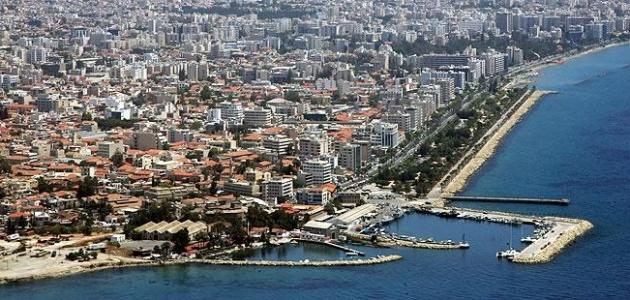The flight from Abu Dhabi to the northern coast of Cyprus takes only 4 hours under normal circumstances, as it is located off the west shores of Asia, including the Syrian and Lebanese coasts. However, I arrived after a 12-hour journey via Istanbul due to the blockade imposed on the Turkish Republic of Northern Cyprus and the prohibition of direct flights to it.
Upon arrival at Ercan Airport after midnight, Mrs. Ozgon from the Government Media Department was waiting for us at the modern European-style airport. She asked me about the journey, and I replied that the road to New York is much shorter than traveling to Northern Cyprus. She laughed and said, “This is the unjust blockade.”
Ercan Airport is located about half an hour from the center of Kyrenia, a city known for its greenery and numerous heritage buildings. The city features various fruit trees, carob, figs, and olives, and the joyous atmosphere was evident on the face of a young man talking about these widespread trees in his city.
We quickly headed to the hotel located on the Mediterranean Sea, and the next morning, I had breakfast on the terrace overlooking the sea.
Historical facts found in Girne Castle on the seashore state that Cyprus has been inhabited since ancient times. Due to its strategic location off the west shores of Asia, all powerful nations in the Mediterranean region have attempted to control the island.
Before Christ, Cyprus was invaded by the Assyrians, Egyptians, Greeks, Persians, and Romans. Saint Paul and Saint Barnabas introduced Christianity to the island in 45 AD. In 330 AD, Cyprus became part of the Byzantine Empire. In 1191, Richard the Lionheart, King of England, seized Cyprus but sold it to a French nobleman. The Ottoman Turks opened the island in the 16th century and ruled until 1878 when they handed it over to Britain, which turned it into a royal colony in 1925.
In the 15th century BC, it fell under the rule of the Egyptian Pharaohs, then the Greek rule, followed by the Roman Empire during the period (58 BC – 395 AD). After the fall of the Roman Empire, it fell under the rule of the Byzantine Empire. During the Arab Islamic era, in the time of Caliph Uthman ibn Affan, the governor of Damascus, Muawiyah ibn Abi Sufyan, led the first naval campaign in Islamic history from Acre in 649 to conquer Cyprus, and he succeeded, bringing the island under Arab control. During the Crusades, Richard the Lionheart subjected it to his rule, appointing a local governor. In 1489, it fell under the rule of the Venetians, who turned it into an important maritime trading base. In 1571, the island came under Ottoman rule, and since 1878, during the weakening and disintegration of the Ottoman Empire, the Ottomans recognized British sovereignty over the island. However, Britain did not officially declare it a British colony until 1925.
Cyprus remained a British colony until August 16, 1960, after which it became an independent and sovereign state. The British retained a military base on the island, covering an area of 256 km². During the post-World War II era and the decolonization period, the Cypriot Orthodox Church led the national struggle against British colonialism. Bishop Makarios was one of the prominent Cypriot leaders in the anti-colonial movement. After gaining independence, Makarios was elected as the first President of the independent Republic of Cyprus on November 3, 1963.
On July 15, 1974, a military coup took place on the island, leading to the fall and escape of the elected President Makarios. On July 20, 1974, in an effort to protect Turkish Cypriots, Turkish forces invaded the island, taking control of the northern parts, resulting in the division of Cyprus into two parts: Turkish (3355 km²) and Greek (5896 km²).
On November 15, 1983, the Turkish Cypriot leadership in control of the northern part declared the establishment of the Turkish Republic of Northern Cyprus. Following a referendum among the residents of the northern part, the proclaimed republic failed to gain any international recognition except from Turkey. The issue of the country’s division into two parts, Turkish in the north and Greek in the south, remains one of the most significant problems causing concern and instability on the island.
The tourism sector seems to be a significant gamble for both Turkish Cypriots and Greek Cypriots. However, the northern part has so far attracted only a small percentage of incoming tourists to the island.
Famagusta, particularly its historical city known as “Salamis,” is famous in the region. Founded around the 1st millennium BCE, the city is rich in historical markets and features a large mosque dating back to ancient times.
Our visit to Cyprus coincided with the celebrations of Peace Day, held on July 20 each year. Military and scout displays took place, and guests and citizens gathered to watch these shows near the Green Line, which separates the two parts of Cyprus. We also witnessed aerial shows along the coast, drawing the Turkish and Turkish Cypriot flags in the sky, while staying at a hotel in Kyrenia.
The tourism sector is a vital focus for Turkish Cypriots, just as it is for Greek Cypriots themselves. The people you meet in the northern part greet you with a smile, making you feel like a part of their community. They are kind-hearted people in a land known for its castles on mountain tops, ancient buildings, sandy beaches, and rugged mountains.
Northern Cyprus boasts breathtaking landscapes. Rugged mountains and golden sandy beaches line the coast, while the fertile Mesaoria Plain lies between the Troodos and Kyrenia mountain ranges. The Troodos range, located on the western side, covers some parts with dense forests. The highest peak in this range is Mount Olympus, reaching 1,952 meters above sea level. The Kyrenia mountain range extends along the northern coast of Cyprus.

